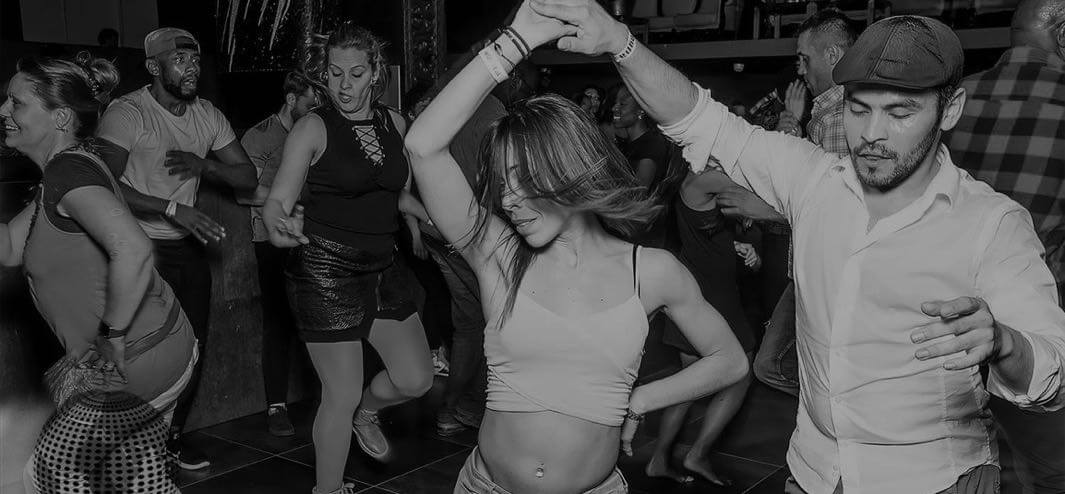Where is Salsa dance from? This question can be answered when we trace Salsa’s roots all the way back to the English Contradance. However, on this side of the world, it first emerged from Cuba as the Cuban Son and was later combined with the Guaracha. From there, it evolved into what is now known as Salsa.
Salsa, as we know it, arose in the 1930s when several composers began to combine different rhythms. The fusion of Cuban Son and Guaracha rhythms produced by Charanga orchestras during the 1930s and 1940s have been modernized today by electronic technology. Currently, Salsa musical phenomenon is studied by musicologists and reported on by journalists in Cuba’s musical sector, Latin America, and some European countries.

Where is Salsa dance from?
Cuban music held the spotlight in the 1950s
Cuban music became so popular with the rise of artist Benny More, who became the most popular Cuban rhythmic singer. Born in 1919 in Santa Isabel de las Cajas, More began his career singing in various ensembles. In 1945, he was contracted for a series of performances in Mexico while working with El Grupo Matamoros. It was here that he came across Pérez Prado and together they took Latin America by storm achieving enormous success.
One of Benny More songs, which was cooperated with Tito Puente
More’s Cuban singing style combined with Mexican and Cuban orchestras was novel and outstanding. More returned to Cuba in 1953 where ten years later he passed away. He is recognized as the best singer of the Cuban genre. So, to put it a bit simple, Cuba can be considered one of the origins for the question “where is Salsa dance from”
In 1959, the combination of the Cuban revolution triumph, the US trade embargoes on Cuba, and the Organization of American States all but resulted in the disappearance of Cuban music. But by this time the rhythms of Cuba had crossed many frontiers and been adopted by many parts of the Americas and Europe.
Salsa from the rise within New York, United States
At this time there was an influx of Cuban musicians into the United States, predominantly New York. Because of this, New York became a reference point and benchmark for Cuban music.

Ray Barretto led the most influential band of New York Salsa, which integrated the trumpet, trombone, violins, and metal instruments, to create an extraordinary sound. His group, Salsa y Dulzura, along with Joe Cuba and his Salsa y Bembe, were the first of many musicians in New York to use the word “Salsa”. In 1965 bands like Richie Ray began to dominate the music scene. During this time, Salsa became strongly associated with New York.
In reality, it was the same Cuban music carrying the name “Salsa”. That is why we said that Cuba is one of the Salsa origins. Yet, the fact that the United States, especially New York, contribute a lot to the answer to “where is Salsa dance from”.
One of Ray Barretto hits – Guarare
What is Salsa?
Salsa music varies according to countries and regions. However, all of it is firmly rooted in Cuban Son. Some of its musical arrangements include trumpets and trombones like Willie Colón, and others integrate trumpets, saxophones, and trombones like Cubana N.G. La Banda. Some Salsa groups have three singers such as Rumbavana, while there are those with only one singer like Paulo y su Elite, Oscar de Léon, Rubén Blades and so on. Today, there is no corner in America where Salsa music is not played or danced to. And in many European countries, it has inspired a musical revolution.
To return to the question: “What is Salsa dance from? And What is Salsa?”, in San Juan they say that Salsa is Puerto Rican. With New York, it is “Neoyorquina” (from New York). In fact, Salsa has always been Cuban. Puerto Rico and New York named Cuban Son “Salsa” and contributed to its international spread.
Another myth is that Salsa is often referred to as Mambo in New York. Mambo is completely different in rhythm, and the two dances have few similarities. The only element they have in common is that they emerged from Cuban Son during the 1930s and 40s.

What should Salsa dancers perceive about Salsa origin?
My students frequently ask me about the origins of Salsa and the correct way to dance its rhythms. My answer is: “Listen to the music, count it, feel the music, and dance.” Instantly, they can feel the rhythm and begin to dance to the music. I believe the most important component when you dance with a partner is the connection between you.
Salsa dancing is expressive, flirtatious, and passionate in all of its forms and movements. It should be danced with the heart as well as the feet, with the spirit and the body full of pleasure at all times. He dances for her, and she for him, like a romance characterized by total surrender. He is conscious of her every movement and follows her with his gaze at all times.
The passion of salsa can only be achieved with a connection. This is the element that transforms salsa into a magical dance where the body and soul fly.
Up to now, you would know briefly the answer to the question: “Where is Salsa dance from? And What is Salsa?”














